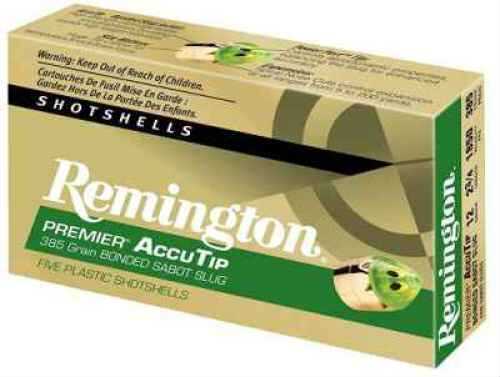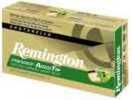Remington 20 Ga. 3" 260 Grain Sabot Slug Md: PRA20M
Power Port Tip delivers Dramatically Superior Accuracy. Spiral Nose cuts And Proprietary bonding Technology Control Expansion at All Ranges From 5 To 200 yards. Over 95% Weight Retention - Weighs More after Impact Than All The others Start With. Slug Jacket Made From High Strength Cartridge Brass. Designed For Use In Fully Rifled Barrels Only.
Gauge: 20 Ga
Type: Sabot Slug
Length: 3"
Ounces: 260 grains
Shot Size: Slug
Muzzle Velocity: 1900 Fps
Rounds/Box: 5 Rounds Per Box, ""
Drams: N/A
Manufacturer: Remington
Model: PRA20M
SKU: SS_58365
Total Rounds: 5
Price Break Discount On 10 Boxes Or More. %5 Discount Will Be applied at Check Out.
| Specification |
|
Value |
| Gauge |
|
20 Gauge |
| Shell Length |
|
3" |
| Shot Type |
|
Sabot Slug |
| Shot Size |
|
Sabot Slug |
| Shot Weight |
|
260 Gr |
| Power |
|
Standard |
| |
|
|
| MFG NO |
|
PRA20M |
| SKU |
|
1048436 |
| UPC |
|
047700507002 |
The Below Information Has Been Provided From Our Gun Caliber Dictionary And Is Meant For Informational Purposes Only. It Is Not Intended to Describe The Unique Specifications For This Ammunition.
The 20-gauge follows the 12-gauge as America's second-most popular shotgun gauge. And, with modern shotshells, continues to gain ground. The 20-gauge has a bore diameter of .615-inch, with modern shells in either 2 3/4 "standard" or 3-inch "magnum" length. Most modern shotguns are chambered to handle both. Payloads vary from light-recoiling 5/8-ounce loads all the way to heavy turkey loads carrying 1 5/16 ounces of shot. Standard 2 3/4" loads for targets and upland birds are normally 7/8 or one ounce. At its very best the 20-gauge does not have the capability of a 12-gauge...but with modern shot, wad columns, and chokes it doesn't give up much, and it can be built into a much lighter shotgun developing less recoil. Virtually all manufacturers offer 20-gauge guns, and they are available in all action types and for virtually all shotgunning sports. The 20-gauge joins the 12, 28, and .410 as one of four events in skeet competition, and is becoming increasingly popular for sporting clays. —
Craig Boddington












